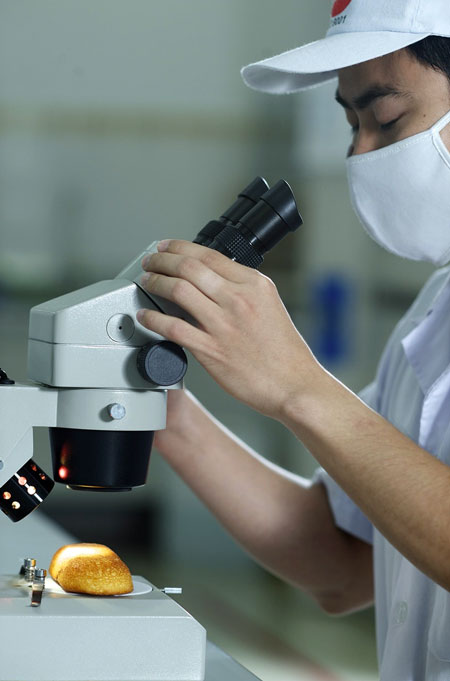The demand for effective non-intrusive inspection programs has surged in recent years across industries such as energy, transportation, and food service. These programs aim to detect flaws, leaks, and signs of wear without the need for traditional invasive methods that often disrupt operations and pose risks to safety. Embracing modern techniques improves the efficiency of these inspections and ensures compliance with regulatory standards, enhances operational safety, and ultimately contributes to cost savings. In this discussion, we explore various innovative techniques and technologies that bolster safer non-intrusive inspection approaches.
Understanding Non-Intrusive Inspection
Non-intrusive inspection encompasses several methods that enable operators to assess the condition of assets without dismantling or interfering with them. This approach is highly valued as it minimizes downtime associated with maintenance and repair while adhering to strict regulatory requirements. Acoustic testing, thermal imaging, and electromagnetic methods are among the diverse tools that inspectors use. Understanding how these techniques work plays a crucial role in selecting the right method for specific applications. The advantages of non-intrusive inspection go beyond merely reducing risk and downtime.
These solutions provide detailed insights into asset integrity, which can prevent catastrophic failures and enhance overall safety. Ultrasonic testing can effectively locate hidden defects in materials that visual inspections might miss, enabling organizations to address potential problems proactively. Leveraging technology through these inspection methods allows industries to preserve resources and enhance operational efficiency, contributing to long-term sustainability.
Acoustic Emission Technology
Acoustic emission (AE) technology relies on detecting the sound waves generated during the rapid release of energy from localized sources within materials. This technique is particularly useful for identifying issues in pressurized vessels, pipelines, and critical structures. By continuously monitoring the acoustic signals, operators can gain valuable insights into the structural integrity of assets and quickly respond to any signs of catastrophic failure.
One of the most significant advantages of AE technology is its ability to work in real-time without the need for direct contact. Acoustic sensors can be strategically placed, allowing for continuous monitoring over extended periods without necessitating shutdowns or interruptions. This method has the potential to detect developing problems long before they lead to failure, thereby reducing risks to personnel and the environment.
Thermal Imaging for Condition Monitoring
Thermal imaging cameras enable inspectors to visualize temperature variations in equipment, facilitating rapid condition assessment. This technique is invaluable for identifying overheating electrical components, insulation failures, and fluid leaks. By detecting these irregularities, thermal imaging allows operators to address potential issues before they manifest as costly repairs or operational downtime. The application of thermal imaging goes beyond just equipment monitoring. With advancements in camera technology, inspectors can now analyze large areas quickly and efficiently while compiling valuable data for better decision-making. The non-contact nature of thermal inspection provides an added layer of safety, reducing the possibility of accidents during inspections. The integration of thermal imaging with data analytics enhances the predictive maintenance capabilities of organizations, enabling them to optimize asset performance while maximizing safety.
Electromagnetic Inspection Methods
Electromagnetic inspection encompasses a range of techniques, including eddy current, magnetic particle, and remote field testing. These methods offer unique advantages when it comes to assessing the integrity of complex metallic components and welds. Eddy current testing is particularly effective for detecting surface and near-surface defects in non-ferrous metals and conducting materials. Such methods enable inspectors to conduct thorough assessments without the need for extensive disassembly or direct access to the component. By harnessing electromagnetic inspection technologies, organizations can minimize false positives and incorrect evaluations, ultimately enhancing the reliability of inspection results. The combination of these methods with sophisticated data analysis techniques provides a comprehensive overview of asset conditions. Integrating electromagnetic methods into inspection programs markedly increases the effectiveness and safety of operations, establishing trust in asset reliability among stakeholders. The strategic use of non-intrusive inspection solutions underscores their pivotal role in maintaining operational integrity and environmental protection. As industries continue to prioritize efficiency and safety, the adoption of electromagnetic inspection methods stands out as a forward-thinking approach to proactive asset management.
Utilizing Robotics in Inspection Processes
Robotics has revolutionized non-intrusive inspection methodologies. Robotic devices equipped with various sensors and cameras can access confined spaces or hazardous environments where human inspectors cannot. These robots can perform a range of tasks, including visual inspections, data collection, and even repair capabilities, all without jeopardizing safety. The deployment of robotic inspection solutions improves safety and significantly enhances efficiency. Inspectors can focus their attention on interpreting the data collected rather than navigating complex inspection environments.
Continuous advancement in artificial intelligence (AI) is streamlining robotic operations, allowing for more autonomous inspections. As the industry gears toward increased automation, incorporating robotics into non-intrusive inspection programs will likely become a standard practice, thus promoting safer working conditions.
Data Analytics and Machine Learning
The integration of data analytics and machine learning into non-intrusive inspection processes has transformed the way industries assess asset conditions. By collecting and analyzing large volumes of data derived from various inspection techniques, organizations can unlock valuable insights that guide maintenance strategies. Predictive analytics can identify patterns and anomalies, enabling companies to anticipate failures before they occur. Machine learning algorithms can further enhance inspection accuracy and efficiency by learning from historical data. These advanced models can recognize subtle signs of deterioration that might escape traditional inspection methods. As these technologies evolve, they will play an increasingly vital role in improving the safety and effectiveness of non-intrusive inspection programs. Data management systems designed to integrate various sources of information will facilitate informed decision-making and optimize asset management strategies in the long run.
Ensuring Compliance and Standards in Inspections
Adherence to industry standards and regulations is pivotal in ensuring that non-intrusive inspection programs remain safe and effective. Various regulatory bodies provide guidelines to help industries implement compliant practices tailored to their specific circumstances. Organizations must stay abreast of these standards to maintain the integrity of their operations and the safety of their workforce. Regular audits and the adoption of best practices help promote a culture of safety within organizations engaged in non-intrusive inspections. Training and certification programs play an important role in keeping personnel informed about the latest advancements and technologies in the field. By fostering a culture of continuous learning and improvement, companies can uphold rigorous safety standards and remain competitive in an increasingly demanding marketplace.









